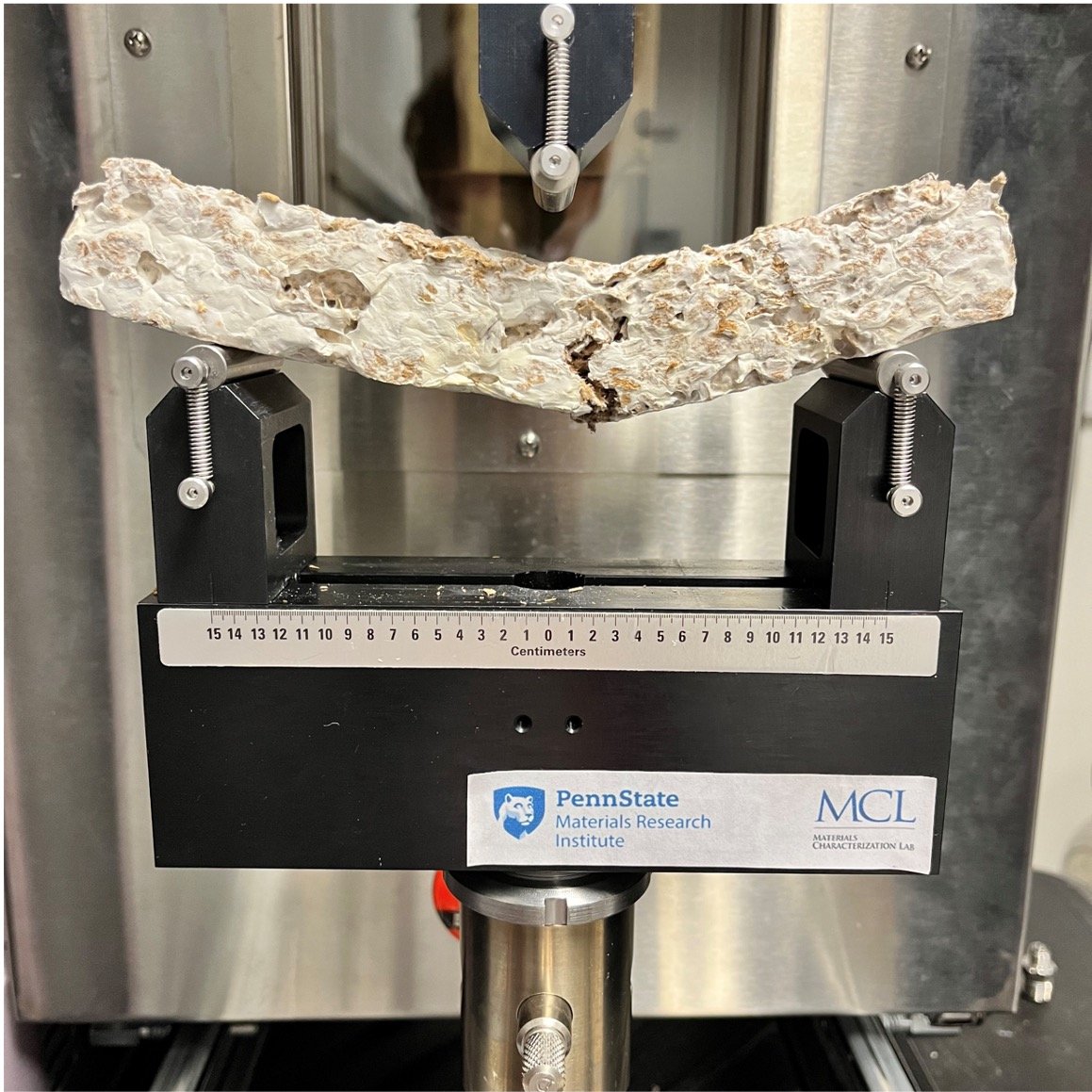Mechanical Tests
Research on the flexural strength of mycelium-based composites.
Although the main focus of this research is not to explore the structural capabilities of mycelium-based composites for construction use, it is still useful to determine the mechanical properties of the material for use as acoustic components. At least, the material must hold its own self weight without cracking or crumbling. The structural integrity of the composite material largely relies on the structure of the substrate material and how well mycelium can grow throughout the substrate. To better understand the mechanical properties of the material, this project outlines the growth of mycelium-based samples and the testing protocol for flexural strength. The test results are primarily used as a comparative tool between samples to determine the effect of substrate material on flexural strength, rather than a comparison with commercial acoustic materials.
Publications:
Walter, N. (2023) Mycelium-Based Composites for Sustainable Architectural Acoustics. [Master’s Thesis, Pennsylvania State University]. Penn State University Libraries. https://etda.libraries.psu.edu/catalog/27176nvw5160.
-

Cardboard
100% fine cardboard substrate material.
-

Sawdust-Cardboard
50% sawdust + 50% fine cardboard substrate material; sawdust is 100% hardwood blend of red and white oak.
-

Switchgrass-Cardboard
50% switchgrass + 50% fine cardboard; switchgrass is obtained from Penn State’s Department of Agricultural and Biological Engineering.
Material Preparation
Material cultivation begins with substrate selection and preparation. The prepared substrates are then sterilized in an autoclave to mitigate contamination. Once sterilized, the materials are inoculated with P. ostreatus mycelium grown on cotton seed hulls and straw (spawn). These samples are left to grow in a controlled growth environment, first in autoclavable bags for 12 days and then in sterile formworks for 16 more days. Once grown, the samples are dried and heated in a 200 °F oven to kill the mycelium and stop the cultivation process. The samples are then shaped to fit into an impedance tube to test for sound absorption.
Testing protocol
The following testing method was developed by Penn State PhD candidate Katy Gerace to test the flexural strength of mycelium-based composites grown on knitted textiles as a part of the project titled “MycoKnit”, which was awarded the SOM Foundation 2021 Research Prize. The testing conditions provided in ASTM D7264, the Standard Test Method for Flexural Properties of Polymer Matrix Composite Materials, are followed.
The samples are tested using an MTS Criterion 50 kN load frame with a 1 kN load cell and 3 pt bend fixtures. The span is set at a constant 150 cm and load is applied with a crosshead displacement of 10 mm/min until failure. Failure is defined as the force necessary to initiate a crack through the thickness of the sample. All samples failed due to cracking near the midpoint. Force vs. deflection data was collected and stress vs. strain curves are obtained following the methodology described in ASTM D7264M. Five samples per test condition are tested to calculate the average.
-

Cardboard
100% fine cardboard substrate material.
-

Sawdust-Cardboard
50% sawdust + 50% fine cardboard substrate material; sawdust is 100% hardwood blend of red and white oak.
-

Switchgrass-Cardboard
50% switchgrass + 50% fine cardboard; switchgrass is obtained from Penn State’s Department of Agricultural and Biological Engineering.